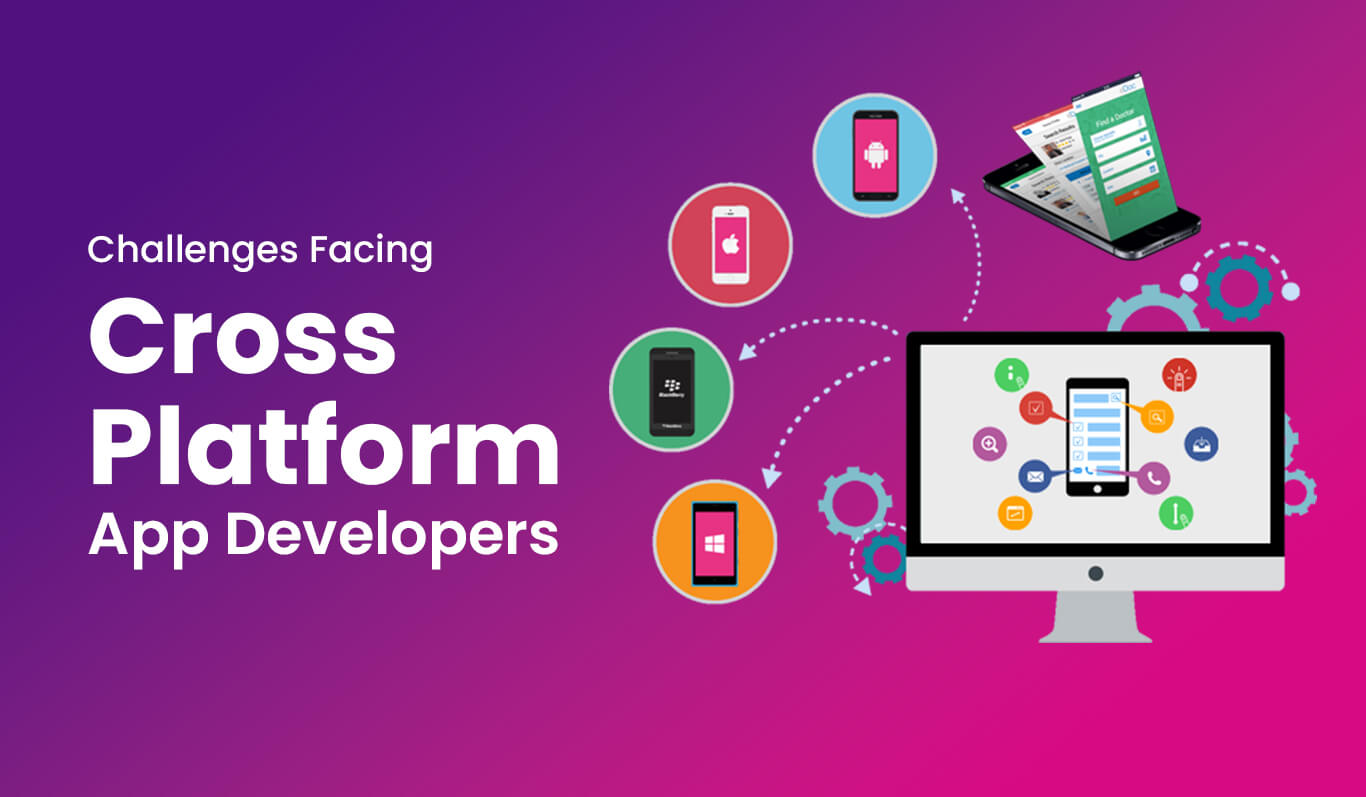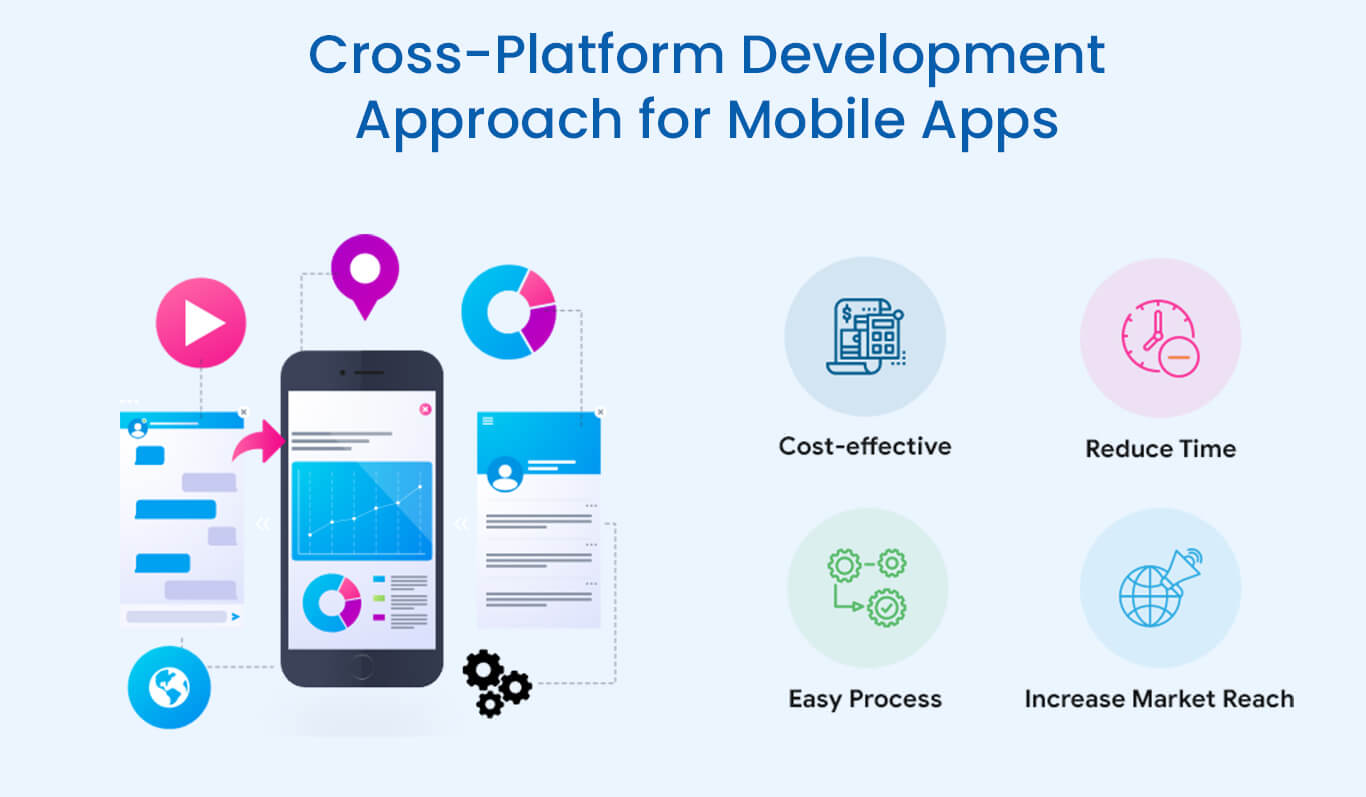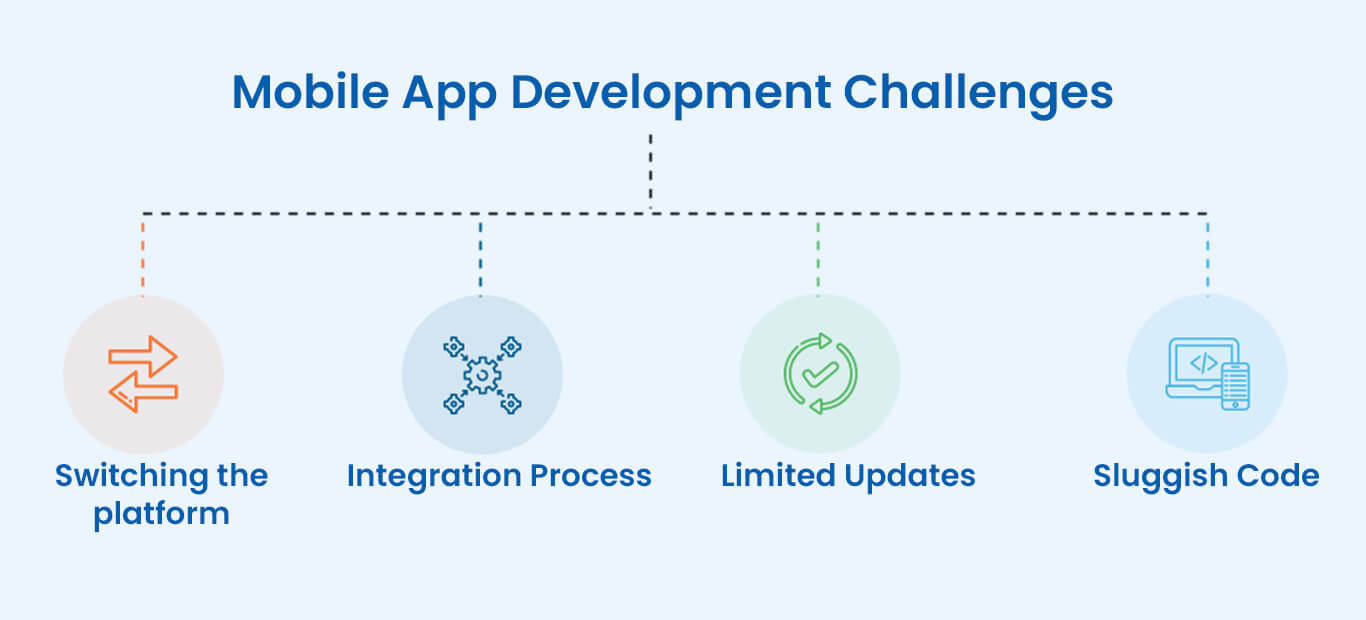The Challenges Facing Cross-Platform App Developers

Is it better to build native apps for each platform or use cross-platform development frameworks like Flutter and React? The cost of native apps is usually an issue for businesses.
It would be a mistake for businesses to miss out on either platform in today's highly disruptive world of mobile app development. For businesses that seek a presence on both Android and iOS, cross-platform app development has emerged as the ideal solution.
How Does a Cross-Platform Development Approach for Mobile Apps Impact Users?

A great experience is all users want. With constant updates and feature releases, consumers expect instant gratification. As far as UI/UX, latency, and features are concerned, the end user has no idea the app was not native.
Getting cross-platform development right, however, presents some challenges, including unresponsive UIs, slow-loading screens, and crashes.
Cross-platform technologies create a unique UI/UX that may deviate from the original platform, which leads to user experience and design problems. It may be necessary to design a certain layout for the UI to ensure the right spacing, for instance as a result of physical or digital buttons occupying space on the screen.
The key is to understand what you are trying to build, and for whom. You might not want to use cross-platform technology if you want to stay on top of the latest OS features or have to adhere to the platform's UI/UX.
Developers, designers, project managers, and others should monitor key metrics and spot problems before a release becomes unstable or unusable. A number of metrics should be monitored, such as the time to interaction with the app, crashes and bugs, freezes and slow frames, and conversion and retention rates.

There are significant limitations to multi-platform mobile app development. The following are some disadvantages associated with developing multi-platform mobile apps.
Achieving performance goals: Software development for cross-platform platforms continues to face performance concerns, which could impact the user experience. A gadget's performance is typically affected by communication breakdowns between its native and non-native components. As a consequence, cross-platform software developers face challenges in maintaining consistency.
Limited development tools and slow code performance: Multi-platform programming is frequently hindered by slow code performance and limited development tools. A variety of factors can lead to application sluggishness during development. It is crucial to note that a single piece of code used across multiple platforms causes memory leaks, which over time slow down the program. Slow code performance could also be a result of an unsatisfactory user interface with cutting-edge features.
An inadequate user experience: As cross-platform programs aren't built with platform-specific IDEs, their capabilities, hardware, and software are limited. As a result, iOS and Android users have difficulty meeting their needs because of the lack of functionality and uniform designs. A bad UX/UI: Another disadvantage of multi-platform development is the issue of poor UX and UI, two key areas of website design. It may take a module longer to respond depending on what operating system it is launched on, due to various settings and native code.
Integration problems: Cross-platform software integration poses a number of time-consuming challenges for developers. In addition to integration difficulties, it may be necessary to use third-party cloud providers due to storage concerns.
Platform rejection rates are higher: A number of cross-platform applications suffer performance and user experience problems that prevent them from meeting specialized app store performance and user experience requirements. These app stores therefore do not have a welcoming response to cross-platform apps compared to natively built apps.
Issues with integrating custom features: Cross-platform development frameworks rarely support critical device properties, such as internal storage access and hardware configuration capabilities. Lack of access to most native device functions exacerbates the problem, which restricts customization choices and hinders most digital product operations. Many popular frameworks do not have this problem, so choose carefully.
Loss of code: Developing cross-platform software also carries the risk of code loss. Often, cross-platform app development frameworks lock developers' code into a project, preventing them from accessing it outside of that platform.
How Can Cross-Platform Development Challenges Be Overcome?
For a cross-platform app to run smoothly, you need to take the following considerations into account.
Identify the right cross-platform development tools
Various tools are available on the market that can help you develop a cross-platform application. There is, however, a difference in the approach and programming language of each of these tools. Consequently, you should select an app development tool according to the type of application you wish to create. The Xamarin platform can, for example, be used for highly featured applications with complex user interfaces.
Differentiating between hybrid apps and native apps
If you are going to develop a cross-platform app, you must first understand whether you need a native or cross-platform app? A native app is the best option if your requirement involves interacting with hardware components. It may be a better option to use a cross-platform application if the application needs to exchange data over the internet.
Testing apps on several platforms and devices
The importance of testing your cross-platform mobile app across all platforms cannot be overemphasized. Automation testing of software and mobile apps across different operating systems and devices can be challenging. It is possible for different hardware components and operating systems to be incompatible, causing application compatibility problems. An automation tool that simulates real-time user experiences on various operating systems and mobile devices can be used to overcome the problem.
Mobile development tools' limitations
Many cross-platform app development tools offer attractive features such as ease of use, supporting common functions and UI elements, etc. However, it is important to know the limitations of various cross-platform mobile development tools. Think about the case of reusing a large volume of code across multiple platforms. It is necessary for developers to modify each platform separately.
Using third-party tools and plugins
A third-party tool or plugin can be an ideal solution for overcoming the limitations of cross-platform mobile development tools. A plugin can be categorized into categories such as network, device, or calendar. You can access a user's phonebook information through a Contacts plugin, for instance, if you want to integrate contacts into an app. There are also various other third-party tools available; choose the one that’s right for you and start testing all mobile applications for all platforms.
Platform-specific coding languages
It's important to keep in mind when creating a cross-platform application that each platform requires different languages for test automation. You must use Objective-C or Swift to develop an iOS app, for example. For Android apps, Java is needed.
Securing sufficient resources
Since cross-platform mobile apps require different coding languages for different platforms, the entire development process can be challenging. It is therefore important for the project team to be well versed in the technical specifications of the various platforms.
Multi-database data storage
Testing cross-platform mobile apps can be quite challenging since developers need third-party tools or plugins to store data. Cross-platform app development tools that include a data storage feature can simplify this process.
Increasing storage capacity
A cross-platform app uses one codebase and one language, thereby saving storage space. In the case of an iOS and Android app, you must design two separate apps; in the case of a cross-platform app, you can design one app for all platforms. It also reduces the amount of time and effort needed to develop the app for all platforms, as it can be compiled from a single codebase.
Conclusion
The development of cross platform apps does have some limitations, including potential performance issues and the inability to fully utilize platform-specific features. In spite of these limitations, cross platform app development is still considered a valuable approach by many developers since it can help them save time and resources.
It is true that cross-platform development isn't suitable for all projects. Native development is preferable in many situations. Developing cross-platform applications can greatly reduce the development time and cost. A start-up can use it to test ideas or create prototypes before investing in native applications. Applications without any specific platform requirements can benefit from cross-platform frameworks such as react native and flutter. So, which of the aforementioned cross-platform mobile app development frameworks is the best? In general, it depends on the business requirements and the functional requirements of the app. Make a well-informed decision by consulting a skilled and experienced cross-platform mobile app development company like Neetable.
FAQs
Which is better, native development or cross-platform development?
With native mobile development, you can create apps that run on Android or iOS. The cross-platform approach, on the other hand, allows apps to be built for multiple operating systems.
What is the key benefit of cross-platform development?
You can reach more people through cross-development since you can create an app that can be used on Android, iOS, and the web. Increasing your market presence this way will save you time and money.
How does cross-platform development compare to native development?
Apps developed with native development are high-performing, but can be costly. When you have a limited budget to work with, cross-platform development makes the most sense. Developing an Android and iOS app with the same codebase will save you 30%-40%.
Request a Quote
Categories
Popular posts
Best Practices for Software Product Engineering Every CTO Should Implement
2023-14-18How to Build Your Own On-Demand Carpooling App Services?
2023-08-25How to Start an On-Demand Fuel Delivery Business: A Comprehensive Guide
2023-07-28Empowering Miners: How Fleet Management Apps are Transforming the Mining Industry?
2023-07-21A Complete Guide to Develop a Food Delivery App for Restaurants in 2023
2023-07-08Mobile Apps Transforming the Travel Industry: A Game-Changer in Travel Planning and Experience
2023-07-07
